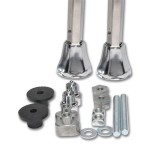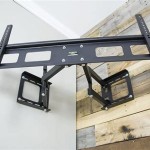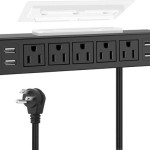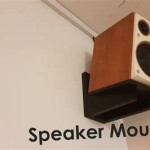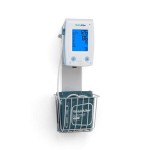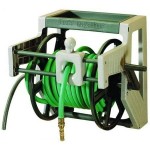Elevating Greenery: A Comprehensive Guide to Wall Mounted Plant Holders for Outdoor Spaces
Wall mounted plant holders offer an innovative and space-saving solution for incorporating greenery into outdoor environments. These fixtures provide a platform for displaying plants against vertical surfaces, such as walls, fences, and posts, transforming otherwise barren areas into vibrant, living displays. The selection of appropriate wall mounted plant holders significantly impacts the aesthetic appeal, plant health, and overall functionality of an outdoor space. This article provides a detailed overview of various types, materials, installation considerations, and maintenance practices associated with wall mounted plant holders suitable for outdoor use.
Types of Wall Mounted Plant Holders
The market for wall mounted plant holders presents a diverse range of designs, each catering to specific aesthetic preferences, plant sizes, and structural requirements. Understanding the different types available is crucial for selecting the most appropriate option for a given outdoor space.
Bracket-Style Holders: These are among the most common types, consisting of a bracket that attaches to the wall and a ring or platform to support the plant container. Bracket-style holders are versatile and can accommodate a variety of pot sizes and styles. They are typically constructed from metal, offering durability and weather resistance. The design variations are plentiful, ranging from ornate wrought iron to minimalist, contemporary styles. The load-bearing capacity of the bracket is a critical factor to consider, particularly when using heavier pots or when the holder will be exposed to strong winds.
Hanging Baskets: While technically suspended, hanging baskets can be effectively mounted to walls using specialized brackets or hooks. These are ideal for cascading plants and flowering vines, creating a visually appealing waterfall effect. The baskets themselves are typically made of woven materials like wicker, metal mesh, or plastic, and often include a liner to retain moisture and prevent soil erosion. The weight of a fully watered hanging basket can be substantial, so robust mounting hardware is essential.
Vertical Garden Systems: These systems represent a more integrated approach to wall-mounted planting. They consist of modular panels or grids that attach to the wall, each containing individual pockets or containers for plants. Vertical garden systems are particularly well-suited for creating large-scale green walls or living screens. They can be customized to accommodate different plant types and arrangements, allowing for creative and dynamic designs. Irrigation systems can be integrated into vertical garden systems to automate watering and ensure consistent moisture levels.
Shelving Units: Wall-mounted shelving units offer a practical and aesthetically pleasing way to display multiple plants at varying heights. These units typically consist of shelves supported by brackets or a frame attached to the wall. Shelving units are suitable for both small and large plants and can be used to create a tiered arrangement, maximizing visual impact and space utilization. The material of the shelves should be weather-resistant, such as treated wood, metal, or durable plastic.
Self-Watering Wall Planters: These planters incorporate a reservoir that stores water and gradually releases it to the plant roots. This reduces the frequency of watering and helps maintain consistent soil moisture. Self-watering wall planters are particularly useful for outdoor environments where regular watering may be challenging or inconvenient. They are typically made of plastic or resin and come in a variety of sizes and styles.
Materials and Durability Considerations
The selection of materials for wall mounted plant holders is crucial for ensuring their longevity and performance in outdoor environments. The chosen materials must withstand exposure to the elements, including sunlight, rain, temperature fluctuations, and humidity. Inadequate material selection can lead to premature deterioration, corrosion, and structural failure.
Metal: Metal is a popular choice for wall mounted plant holders due to its strength and durability. Wrought iron, steel, and aluminum are commonly used. Wrought iron offers a classic, decorative look but is susceptible to rust if not properly treated with a protective coating. Steel provides excellent strength and is often powder-coated to prevent corrosion. Aluminum is lightweight and naturally resistant to rust, making it a good option for coastal environments. The gauge or thickness of the metal is an important consideration, as thicker metal will provide greater strength and stability.
Wood: Wood offers a natural and rustic aesthetic but requires careful selection and treatment to withstand outdoor conditions. Cedar, redwood, and teak are naturally resistant to rot and insect infestation and are commonly used for outdoor furniture and plant holders. Pressure-treated lumber is another option, but it may contain chemicals that can leach into the soil and harm plants. Regular sealing or painting is necessary to protect wood from moisture and UV damage.
Plastic and Resin: Plastic and resin are lightweight, durable, and resistant to moisture and UV damage. They are available in a wide range of colors and styles and are often more affordable than metal or wood. High-density polyethylene (HDPE) and polypropylene are commonly used plastics for outdoor plant holders. These materials are recyclable and can withstand extreme temperatures without cracking or fading. However, some plastics may become brittle over time with prolonged exposure to sunlight.
Composite Materials: Composite materials, such as a blend of wood fibers and plastic, offer a combination of natural aesthetics and durability. These materials are resistant to rot, insect infestation, and fading and require minimal maintenance. Composite materials are a good alternative to wood, providing a similar look and feel without the need for regular sealing or painting.
Considerations for Coastal Environments: Coastal environments pose unique challenges due to high humidity, salt spray, and strong winds. Materials used in these areas should be highly resistant to corrosion and degradation. Aluminum, stainless steel, and marine-grade plastics are excellent choices for coastal applications. Regular cleaning with fresh water is recommended to remove salt buildup and prevent corrosion.
Installation and Maintenance Best Practices
Proper installation and ongoing maintenance are essential for ensuring the safety, stability, and longevity of wall mounted plant holders. Incorrect installation can lead to structural failure, posing a risk to people and property. Regular maintenance helps prevent corrosion, rot, and other forms of damage, extending the lifespan of the plant holders and maintaining their aesthetic appeal.
Assessing Wall Structure and Load Capacity: Before installing any wall mounted plant holder, it is crucial to assess the wall structure and its load-bearing capacity. Different wall types, such as brick, concrete, wood framing, and stucco, require different types of fasteners. Hollow walls require the use of specialized anchors that expand or grip the back of the wall to distribute the load. It is essential to locate studs or solid backing behind the wall to provide secure attachment points. The weight of the plant holder, the pot, the soil, and the plant must be considered when determining the appropriate size and type of fasteners. Overloading the wall can lead to structural damage or even collapse.
Selecting Appropriate Fasteners: The choice of fasteners is critical for ensuring a secure and stable installation. Stainless steel screws and bolts are recommended for outdoor applications, as they are resistant to corrosion. The length of the fasteners should be sufficient to penetrate deeply into the wall structure and provide adequate holding power. For heavy plant holders, lag screws or through bolts with washers and nuts may be necessary. Using the correct drill bit size and pilot holes is essential for preventing the fasteners from stripping or breaking.
Proper Mounting Techniques: When mounting plant holders, it is important to ensure that they are level and plumb. Using a level and a plumb bob will help ensure that the plant holder is installed correctly. The spacing between mounting points should be appropriate for the size and weight of the plant holder. Over-tightening fasteners can damage the wall or the plant holder, so it is important to apply the correct amount of torque. If installing multiple plant holders, consider the overall design and spacing to create a visually appealing arrangement.
Regular Cleaning and Inspection: Regular cleaning and inspection are essential for preventing corrosion, rot, and other forms of damage. Plant holders should be cleaned regularly with a soft brush and soapy water to remove dirt, dust, and debris. Metal plant holders should be inspected for rust and corrosion and treated with a rust inhibitor or protective coating as needed. Wood plant holders should be inspected for rot and insect infestation and treated with a sealant or preservative as needed. Plastic and resin plant holders should be inspected for cracks and fading and cleaned with a mild detergent.
Seasonal Maintenance: Seasonal maintenance is also important for ensuring the longevity of wall mounted plant holders. In cold climates, remove plants from the holders during the winter months to prevent frost damage. Store the plant holders in a dry place to protect them from the elements. In hot climates, provide shade for the plants during the hottest part of the day to prevent them from overheating. Adjust watering schedules based on the weather conditions and the needs of the plants.
Drainage Considerations: Adequate drainage is essential for preventing waterlogging and root rot. Ensure that the plant holders have drainage holes to allow excess water to escape. Use well-draining potting soil to prevent the soil from becoming compacted. Avoid overwatering, as this can lead to root rot. Consider using a saucer or tray underneath the plant holder to catch excess water and prevent staining on the wall.
By adhering to these guidelines, individuals can effectively select, install, and maintain wall mounted plant holders, creating vibrant, space-saving gardens that enhance the aesthetic appeal of their outdoor areas.

Vertical Planter Indoor Outdoor Wall Etsy Nederland

4 Box Wall Mounted Indoor Outdoor Planter Reviews Crate Barrel Planters

Outdoor Planter Indoor Wall Planted Mounted Etsy

20 Best Wall Planters Gorgeous Indoor And Outdoor Plant Holders

Outdoor Spanish Garden Hanging Wall Planter For Plants Earthgarden

Nayab Scrolled Small Pot Wall Mounted Hanging Plant Stand Holder Rack Without Planters For Balcony Garden Indoor Outdoor Corner Shelf Set Of 4 Black At Best S In

27 Best Wall Hanging Planters For Indoors Outdoors

Beauty Panda Teak Wood Plant Stand Indoor Outdoor Hanging Shelf Beautypanda In

Beauty Panda Teak Wood Plant Stand Indoor Outdoor Hanging Shelf Beautypanda In

Retro Wooden Flower Pots Wall Mounted Planter Holder For Home Garden Indoor Outdoor Yard Porch Decor Wal Com


